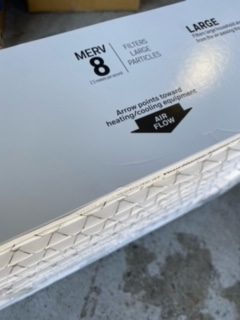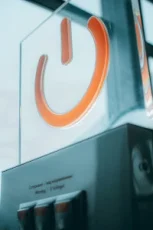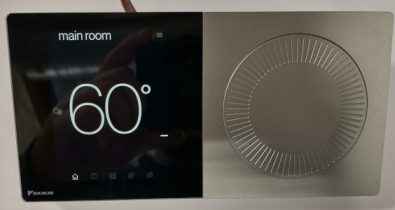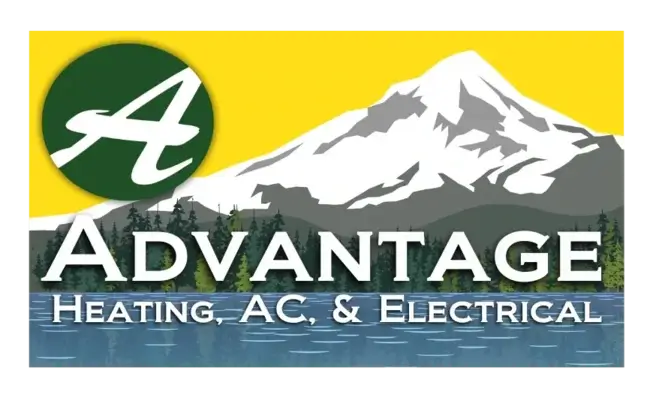Why Your AC Isn’t Working and How to Fix It!
A busted AC can make life at home miserable. The good news is that some of these problems have easy fixes that you can do yourself. If you know your AC isn’t working, it’s important to know why. There are three common symptoms, and each can have a different cause:
- Is it not turning on at all?
- Is it blowing warm air?
- Is it not blowing enough air?
In this post, we’ll go over some of the most common things that can go wrong with your AC and what you can fix as the homeowner as well as what will require professional attention. We’ll break it down by symptoms and list the potential causes. That should make it easier for you scan the page based on how your AC is behaving to find the potential problem and fix.
The Most Common Problem
Before we get into the rest of the list, we have to mention the most common problem for AC units and HVAC systems. This problem can cause any of the following symptoms. The second you think something is wrong with any part of your HVAC system, this should be the first thing you check.
This is, of course, the air filter.
A dirty air filter or dirty air ducts can clog your entire HVAC system and cause a ton of problems. This includes:
- Restricting Airflow from your AC unit
- Warming air from your AC unit
- Or freezing over the coils and shutting down your AC unit until it defrosts.
Check your air filter and make sure there is no visible dirt or build up that could clog your ducts.
How Often to Replace Air Filters
The frequency at which you change air filters depends on the size and the manufacturer’s recommendation. You might even have a washable or reusable filter that will have its own instructions on how offer to wash it. We have more information on changing filters here (link to filter article).
At the bare minimum, replace your air filter every 3 months and check it for build up every month.
AC Isn’t Turning on at All

The following problems can all prevent your AC unit turning on.
Thermostat Problems
This one may seem obvious, but if your thermostat does not have power or has the wrong settings, your AC will not turn on.
First, make sure your thermostat has power. If it uses batteries, make sure they are fresh and fully charged.
Second, make sure it’s set to cool and not just “on” or “fan.” It needs to be told to activate the AC unit and not just run the fan.
Last, double check that any programming isn’t overriding the settings or causing it to not run.
Burned Out Motor
It’s potential that strain from lack of airflow or natural wear and tear has burned out the fan motor. Listen to your HVAC system while it is in the “Fan” setting. If you hear nothing, you might need to have an HVAC professional look at the fan motor.
Equipment Failure
It’s possible that a part of the AC unit has failed. This could be certain parts of either the indoor or outdoor unit or related equipment. A technician should check these parts during your annual cooling tune-up in spring. If your HVAC technician recommends you have a part repaired or replaced, it could mean that your AC will stop working soon.
Some parts that can fail are:
- Start Capacitor
- Run Capacitor
- Coils
- Contacts
- Electrical Wiring
Flipped Circuit or Blown Fuse
The problem could be that your AC unit is just not getting power. Check your circuit breaker and make sure that the breaker for your AC unit is not tripped.
If your AC unit is consistently tripping the breaker, or an HVAC technician has detected that your AC unit has blown a fuse, you will need to repair the blown fuse or contact an electrician if you’re unfamiliar with the process. Some HVAC companies keep electricians on staff for this reason.
Disconnect Switches
Your disconnect switches could be a reason that your AC unit is not receiving power. Sometimes these switches get left on “OFF” by a technician after they perform maintenance, or it’s possible that someone nudged them while walking through the garage or by the unit.
Check the disconnect switches next to the indoor unit and the outdoor unit, and make sure they are set to “On.”

AC Is Blowing Warm Air
You may notice that your AC is blowing warm air, the opposite of what it should be doing. These are some problems that could cause that.
Dirty Coils
It’s possible that dirty or debris has built up the coils. If that happens, then your AC unit cannot use the refrigerant in the coils to suck the heat out of the air. That means it will send warm air back into your home.
A professional should handle the actual maintenance of your coils, but you can take steps to prevent them from getting dirty.
Keep your AC units and vents clear of obstruction and don’t place furniture or large objects next to them. Clean the grates and casing of your outdoor AC unit and trim back vegetation so that it does not grow into the unit.
Dirty Filter
If your filter is dirty or clogged, then air can get trapped in your HVAC system. Not only does this mean you’re not getting cold air in your home, but this can also damage parts of your HVAC system. This could ice over the coils and damage them.
Thermostat Settings
This could also be as simple as one switch on your thermostat. Make sure that your thermostat is set to “cool”. If it’s just set to “fan” or “on,” then it will just blow the air that’s inside the ducts. If the air in your home is already warm, then you will just be getting more warm air.
AC Isn’t Blowing Enough Air

You may notice that your AC is blowing warm air, the opposite of what it should be doing. These are some problems that could cause that.
Dirty Coils
It’s possible that dirty or debris has built up the coils. If that happens, then your AC unit cannot use the refrigerant in the coils to suck the heat out of the air. That means it will send warm air back into your home.
A professional should handle the actual maintenance of your coils, but you can take steps to prevent them from getting dirty.
Keep your AC units and vents clear of obstruction and don’t place furniture or large objects next to them. Clean the grates and casing of your outdoor AC unit and trim back vegetation so that it does not grow into the unit.
Dirty Filter
If your filter is dirty or clogged, then air can get trapped in your HVAC system. Not only does this mean you’re not getting cold air in your home, but this can also damage parts of your HVAC system. This could ice over the coils and damage them.
Thermostat Settings
This could also be as simple as one switch on your thermostat. Make sure that your thermostat is set to “cool”. If it’s just set to “fan” or “on,” then it will just blow the air that’s inside the ducts. If the air in your home is already warm, then you will just be getting more warm air.
AC Isn’t Blowing Enough Air
If your AC is blowing cold air, but not enough to actually cool your air, the air flow could be restricted.
Dirty Filter or Vents
We’ve already mentioned this before, but it’s worth mentioning again. A clogged filter or dirt buildup in your vents can restrict airflow.
Check your filter and replace it if it’s dirty.
Clog Drain
There could be a clog in the drain that is slowing down your HVAC system.
This is a problem that requires some plumbing work, so contact your local HVAC professionals if you are not confident attempting to tackle this fix. You will need the properly rated glue and primer as well as PVC cutters.
Turn off your AC and disconnect the white PVC pipe that connects to your outdoor unit. Manually remove any debris or build up and then reattach the pipe. Let your AC run to see if the performance has improved.
If there is a lot of buildup that goes deep into the drain, contact your local HVAC professionals and have them service the unit.
Closed Vents
This may seem obvious, but it comes up every year. Make sure your registers and vents are open and unobstructed. If you have a manual damper, try opening it. If airflow gets stuck in the ducts, it can’t cool your home.
Incorrectly Sized Unit
It could also be an issue of having the wrong size of AC unit for your home. Keep in mind, if you have a two-story home, it will be hard to keep the upstairs cool unless you have two units or an HVAC system with zoning.
If you think your AC unit is too small, we have a post on how to tell what size you need.
Debris in the Outdoor Unit
Vegetation or debris in your outdoor unit can reduce its performance and block air flow. Keep the vegetation around your outdoor unit trimmed back and groom any trees that could drop leaves and windfall into your AC. Keep large objects away from your outdoor AC as well, as they could collect dirt which the AC unit can suck in.
Special Handling for Refrigerant Leaks
If your AC unit is not cooling the air and you notice it is leaking or that it has frozen over, you may have a refrigerant leak. This would be a leak coming from the unit or line set itself.
If it looks like the drain is leaking outside of where it normally drains, then it’s likely not a refrigerant leak and a clog or blockage just needs to be removed from the drain.
Call your local HVAC pros immediately as a refrigerant leak is dangerous for your health and the environment around your home. According to EPA standards, you have 30 days to have the leak fixed from discovery or create a plan with an HVAC professional to have it repaired within 120 days. There are more details in our post here.
Who Are Advantage Heating & Air Conditioning, LLC?
We are your local HVAC Experts out of Salem, Oregon. We hope that this post helps you diagnose your AC unit. If you have other questions about HVAC systems, check out our other blogs. To learn more about who we are and how we can help you, visit our website and follow us on social media – we’re here when you need us!







